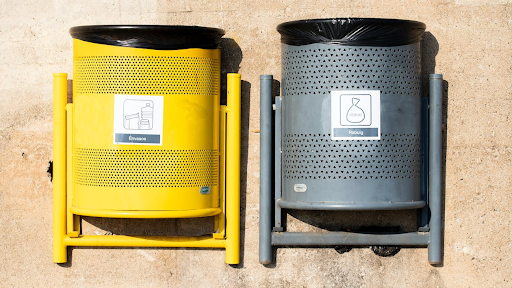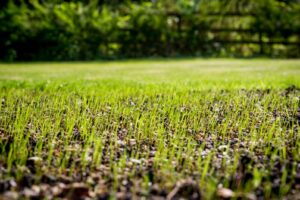
In a world increasingly concerned with environmental sustainability, every little change can make a big difference.
From recycling to reducing plastic consumption, individuals and businesses are taking steps to protect our planet.
One such change that has gained popularity is the use of biodegradable bin liners. These eco-friendly alternatives to traditional plastic trash bags offer a compelling solution to the problem of plastic waste.
In this article, we will explore the benefits of biodegradable bin liners, how they work, and why they are a better choice for the environment.
The Plastic Predicament
Plastic pollution is one of the most pressing environmental issues of our time. With an estimated 8. 3 billion metric tons of plastic produced since the 1950s, plastic waste has found its way into every corner of the globe.
Landfills overflow with plastic trash, and our oceans are choked with plastic debris, harming marine life and ecosystems.
Plastic bags, including those used as bin liners, are a significant contributor to this crisis.
Traditional plastic bin liners are made from non-biodegradable materials, which means they can persist in the environment for hundreds of years.
This enduring nature of plastic poses a grave threat to the ecosystem, and it’s high time we consider alternative solutions. This is where biodegradable bin liners come into play.
Biodegradable Bin Liners: An Overview
Biodegradable bin liners are designed to break down naturally and degrade into non-toxic substances when exposed to the environment.
hese eco-friendly bags are usually made from renewable resources, such as cornstarch or potato starch, rather than petroleum-based plastics.
They offer a promising solution to the problems caused by traditional plastic bin liners.
How Biodegradable Bin Liners Work?
Biodegradable bin liners work on a simple principle: they are designed to decompose under natural conditions.
The materials used in these bags are organic in nature and, when exposed to moisture and oxygen, they start to break down. Here’s how the process typically works:
Material Selection: Biodegradable bin liners are made from organic materials like cornstarch, potato starch, or other plant-based sources. These materials are chosen for their ability to degrade naturally.
Biodegradation: When these bags are discarded and end up in a landfill or composting environment, they are exposed to moisture and oxygen.
This exposure initiates the biodegradation process.
Decomposition: The organic materials in biodegradable bin liners start breaking down into simpler compounds.
Microorganisms in the environment, such as bacteria and fungi, play a crucial role in this decomposition.
Return to Nature: As the biodegradable bin liner continues to break down, it transforms into water, carbon dioxide, and organic matter.
These end products are harmless and can safely return to the natural environment, providing nutrients to the soil.
Benefits of Biodegradable Bin Liners
Reduced Plastic Pollution: The most significant benefit of biodegradable bin liners is their contribution to reducing plastic pollution.
These bags decompose within a reasonable timeframe, eliminating the risk of long-lasting plastic waste in landfills and oceans.
Versatile Usage: Biodegradable bin liners are available in various sizes and strengths, making them suitable for a wide range of applications, from kitchen trash to outdoor cleanup.
If you’re looking for eco-friendly options, consider exploring the selection at Giganticbag.com, where you’ll find a range of biodegradable bin liners to meet your waste management needs.
Environmental Friendliness: Biodegradable bin liners are made from renewable resources, reducing our reliance on fossil fuels. This makes them a more sustainable and eco-friendly choice.
Lower Carbon Footprint: The production of traditional plastic bags generates significant greenhouse gas emissions.
Biodegradable bin liners, on the other hand, have a lower carbon footprint, as they are made from renewable materials and decompose naturally.
Support for Composting: Biodegradable bin liners are a great addition to composting efforts. They can be placed in your compost bin along with organic waste, further contributing to sustainable waste management.
Changing Consumer Behavior: The use of biodegradable bin liners encourages consumers to be more mindful of their environmental impact and make eco-conscious choices in their daily lives.
Challenges and Considerations
While biodegradable bin liners offer many benefits, they are not without their challenges and considerations:
Biodegradation Time: The time it takes for biodegradable bin liners to break down can vary depending on environmental conditions.
In some cases, it may take longer than expected, particularly in landfills with limited access to oxygen and moisture.
Contamination Issues: Contamination of biodegradable waste with non-biodegradable items can hinder the composting process and result in a longer decomposition period.
Proper waste separation is essential for effective biodegradable waste management.
Cost: Biodegradable bin liners are often slightly more expensive than traditional plastic bags due to the use of organic materials and eco-friendly manufacturing processes.
However, many consumers are willing to pay a premium for the environmental benefits they provide.
Limited Availability: Biodegradable bin liners may not be as readily available as traditional plastic bags in all areas. Their accessibility can vary depending on your location.
Conclusion
The world is waking up to the environmental challenges posed by plastic waste, and the adoption of biodegradable bin liners is a step in the right direction.
These eco-friendly alternatives offer numerous benefits, including reduced plastic pollution, lower carbon footprint, and support for composting efforts.
While challenges exist, the overall positive impact on the environment makes the use of biodegradable bin liners a compelling choice.
In our quest to protect the planet, every decision we make, no matter how small, can contribute to a more sustainable future.
By choosing biodegradable bin liners over traditional plastic bags, we are making a conscious effort to reduce our plastic footprint and promote a cleaner, healthier environment for generations to come. It’s a simple change that can make a world of difference.






